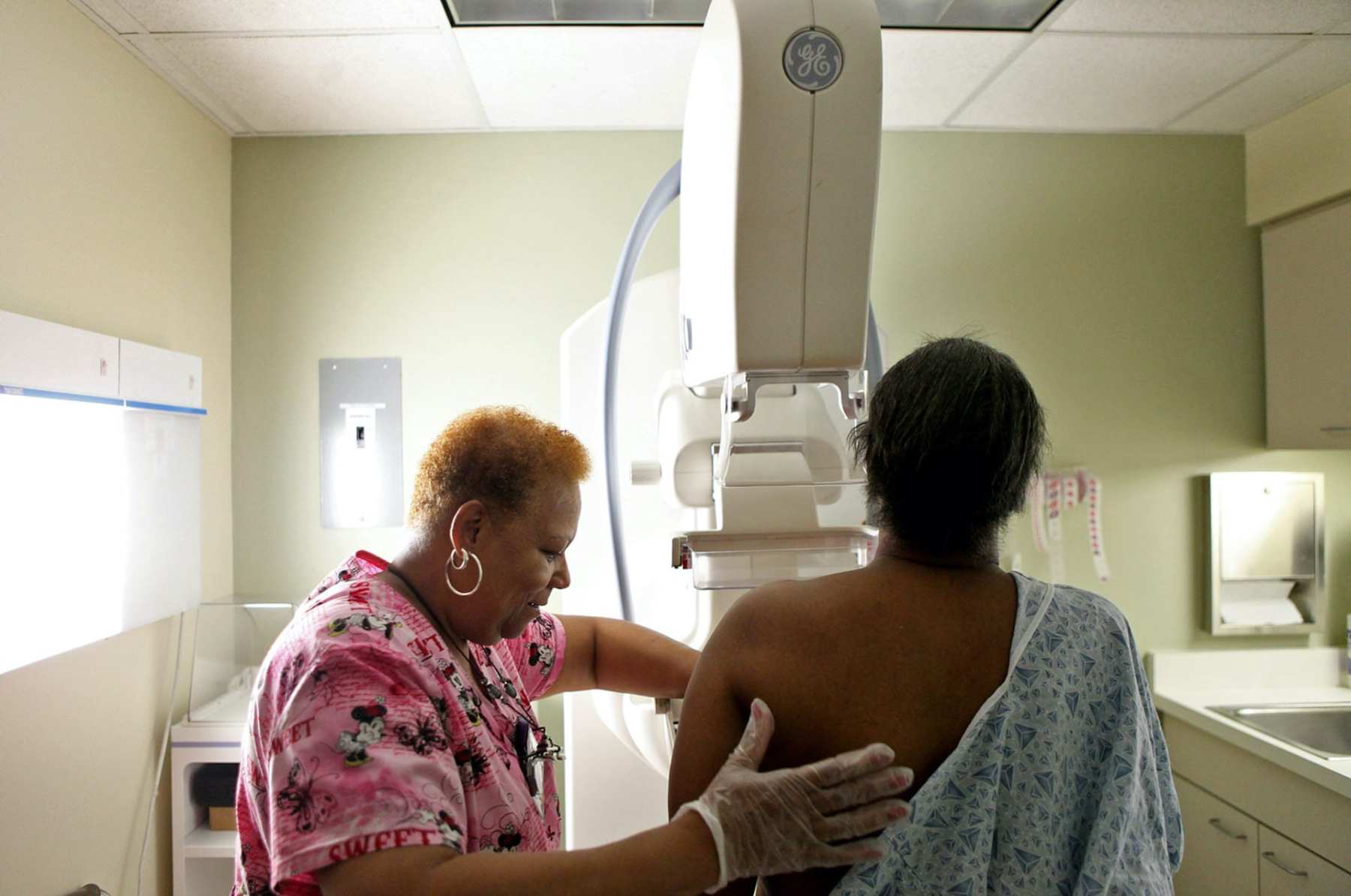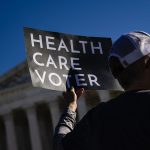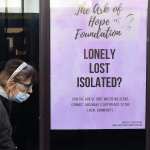We’re the only newsroom dedicated to writing about gender, politics and policy. Subscribe to our newsletter today.
The number of mammograms performed during the early months of the COVID-19 pandemic plummeted, sparking concerns about the long-term consequences of delaying preventive care as virus counts surge once again.
A new study published in the journal JAMA Network Open tracked declines in preventive health care in March and April, analyzing health insurance claims data from employer-sponsored plans in all 50 states. Use of preventive medicine — screenings, vaccines and check-ups — fell precipitously.
Compared to those same months in 2019, mammograms dropped by 67 percent for women between 46 to 64. In April alone, mammograms dropped by 90 percent for that age group — comparable to drops in colonoscopies among men, but far bigger than the cutbacks in other preventive services, like vaccines for young children or hemoglobin A tests.
“Virtually nobody got a mammogram in April 2020. That is a frankly unprecedented cutback in an important service,” said Christopher Whaley, an associate policy researcher at the research organization Rand Corp and the study’s lead author.
The paper builds on an emerging body of evidence that suggests preventive cancer screenings — mammograms and pap smears in particular — have fallen to the wayside in the pandemic, especially in the early months of lockdown. Other data collected by IQVIA, a hospital data company, found that the number of pap smears performed from February through April fell by 83 percent.
Data from IQVIA and other companies do suggest that more people began getting those preventive services this summer, when much of the country at least partially reopened. But the numbers remain far below where they had been in previous years.
That, experts agree, is due to a combination of factors: Hospitals and health systems don’t always have the capacity to provide these services — especially as local cases climbed — but also patients feeling unsafe going in to get cancer screenings. Unlike many other medical services, which were administered virtually, mammograms and pap smears can’t be done via telehealth.
The JAMA findings are likely “the tip of the iceberg,” Whaley said. The data only looks at people with access to employer-based insurance, a group that typically skews wealthier.
That means it didn’t include people with tighter finances — those who lost their jobs or insurance in the pandemic, or who have insurance through Medicaid, which covers larger shares of Black and Latinx people.
“There’s a very robust body of research that shows people who are uninsured are the least likely to get preventive care,” said Alina Salganicoff, a senior vice president and director of women’s health policy at the nonprofit Kaiser Family Foundation.
Beyond health insurance, people who are uninsured or on Medicaid are more likely to face systemic barriers — transportation and child care, for instance — that were exacerbated by the pandemic and already made it difficult to get care.
The data isn’t yet there to probe how the drops in preventive care have fallen along racial lines. But Black and Latinx people have been disproportionately affected by the coronavirus, which could heighten existing disparities.
Already, government data shows that Black women were more likely than White women to die of breast cancer, and that Latina women had higher cervical cancer mortality rates. (The data only looks at racial disparities between cisgender women.) Both disparities stem from spottier, more delayed access to preventive screenings and care — problems now more likely to grow.
“If a community gets a very heavy or large outbreak, people will make decisions to defer care,” Salganicoff said. “We know from the data that African Americans and Latinas have been disproportionately affected by the pandemic, and those communities are very aware of the impact that COVID-19 has had.”
Meanwhile, experts say, as winter threatens to yield another wave of coronavirus infections and deaths, the number of people getting preventive care is likely once again to go down. On November 4, the nation recorded 100,000 new cases of COVID-19.
The long-term implications are troubling, Salganicoff said. Deferring care for a couple of months isn’t necessarily harmful, especially for people at lower risks. But longer delays can have more severe health consequences.
“I anticipate that if we do have a surge in cases, and a significant surge in cases, that people will be reluctant to get care they can defer. And very often, preventive care is kind of on the top of that list,” she said.
In June, the National Cancer Institute projected that delayed screenings could yield more than 5,000 excess breast cancer deaths over the next decade. But that was a moderate estimate, NCI director Ned Sharpless wrote at the time, noting that the model assumed only six months of access to medical care being disrupted.
The NCI hasn’t updated its estimates since then. But the fact that the disruption has already lasted longer than six months suggests that the excess death toll could rise, experts said, especially if the health system and policy makers don’t figure out a way to safely deliver preventive care.
“[COVID-19] is not going away, and we really need to figure out how we can continue to get people preventive services,” Salganicoff said. “We know it has value, and it improves health and saves lives.”






